SURGE IN STRIFE FROM LEFT AND RIGHT SLOWS COLOMBIA'S PEACE EFFORTS
By JOSEPH B. TREASTER, SPECIAL TO THE NEW YORK TIMES
In the last two weeks there has been a surge in fighting and right-wing terrorism in Colombia's long guerrilla war, signaling a further setback to President Belisario Betancur's efforts to bring peace to this country.
Guerrillas of the April 19 Movement, or M-19, have carried out 15 attacks including one in which they took over an entire town of 35,000 people and held it for nearly eight hours.
Paramilitary forces, said to be closely associated with Colombia's armed forces, are believed responsible for bombing the headquarters of the Communist Party and gunning down two prominent leftist leaders, one of them an outspoken advocate of Mr. Betancur's peace initiatives.
In the last few days M-19 has issued a series of threats to take over country clubs and public buildings and to kidnap executives of foreign corporations.
Apparently in connection with those threats, four guerrillas last Saturday fired submachine guns from a speeding car at a navy officers' club where a children's party was under way. Two navy sentries were wounded.
Military and Police on Alert
The military and the police in Bogota have been ordered on extraordinary alert. Truckloads of soldiers with rifles and submachine guns have taken up positions on downtown streets, and guards with submachine guns have been posted on the roof of the national police headquarters.
Western diplomats and Colombian political analysts say they believe M-19 has been pressing the fight in an effort to demonstrate that it is still a potent force after the debacle at the Palace of Justice earlier this month. About 100 people were killed when the military responded with overwhelming force to break a 28-hour rebel siege of the palace. The dead included 11 Supreme Court Justices, who were among dozens of hostages, and the 35 guerrillas who staged the attack.
The M-19 organization gained worldwide notoriety nearly six years ago when it invaded a cocktail party at the embassy of the Dominican Republic here and then held more than 28 diplomats, including the United States Ambassador, hostage for two months. The guerrilla group accepted Mr. Betancur's offer of a cease-fire in the late summer of 1984 after several other rebel groups had signed accords with the Government.
The M-19 organization gained worldwide notoriety nearly six years ago when it invaded a cocktail party at the embassy of the Dominican Republic here and then held more than 28 diplomats, including the United States Ambassador, hostage for two months. The guerrilla group accepted Mr. Betancur's offer of a cease-fire in the late summer of 1984 after several other rebel groups had signed accords with the Government.
Group Withdrew From Truce
The leaders of the largest guerrilla organization in the country, the Revolutionary Armed Forces of Colombia, say they remain committed to the truce they signed 18 months ago. But no peace seems possible without the highly visible M-19, which is thought to be the second largest guerrilla group.
The diplomats and Colombian political analysts say the M-19 guerrillas see themselves as modern Robin Hoods and seem to be particularly concerned about their public image. For years they have been hijacking milk trucks and giving the milk to poor people.
When M-19 broke the truce, the diplomats and analysts say, it lost some of the public support it had enjoyed.
The group contends that its main motive in taking the Palace of Justice was to win back some of that support. The intention, group members have said, was to force President Betancur to make public some official investigations that the guerrillas said would demonstrate they had been victimized by the armed forces in the truce.
Some Vindication Seen
The leaders of M-19 have said that they assumed that President Betancur, who had bargained with guerrillas in the past to achieve a cease-fire, would be willing to discuss their demands. But the only response to their action, which began with the slaying of several guards, was gunfire.
The military, while publicly expressing support for President Betancur's efforts to disarm the guerrillas, has long been skeptical of this action. The armed forces chiefs have argued that amnesties and truces only give the guerrillas an opportunity to recuperate and re-arm for new adventures. Many diplomats believe the military is secretly trying to sabotage the President's peace efforts through the use of paramilitary forces.
For the moment, diplomats and political analysts say, the battle at the Palace of Justice has severely polarized the military and M-19, and they say they expect increasing combat in the weeks ahead.
Two small rebel groups, which had always rejected peace talks, have joined with M-19 in recent months in military operations, and a third, the Popular Liberation Army, joined M-19 in the takeover of the town of Urrao, northwest of Bogota, about a week ago.
The Popular Liberation Army had signed a truce, and the Urrao operation looked like a repudiation of the accord. But the spokesman for the group, Oscar William Calvo, called a news conference to say that his group still regarded itself as being a part of the ''peace process.'' He said the takeover of the town had been intended as a specific retaliation against army abuses of the truce.
Six hours later Mr. Calvo, who was a member of a commission that Mr. Betancur has been trying to organize since mid-October to monitor the truce, was chased into a downtown drug store and sprayed with machine-gun fire. A bodyguard and a young woman died with him.
New York Times, November 29, 1985


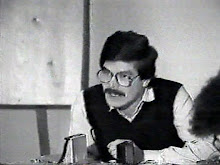

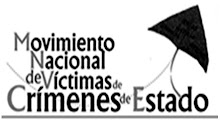

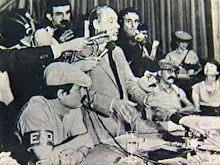




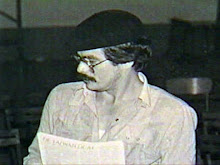
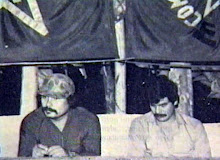

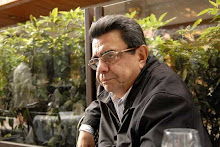

No hay comentarios:
Publicar un comentario